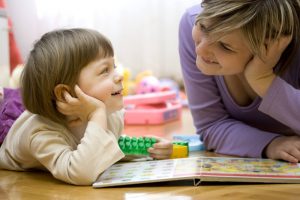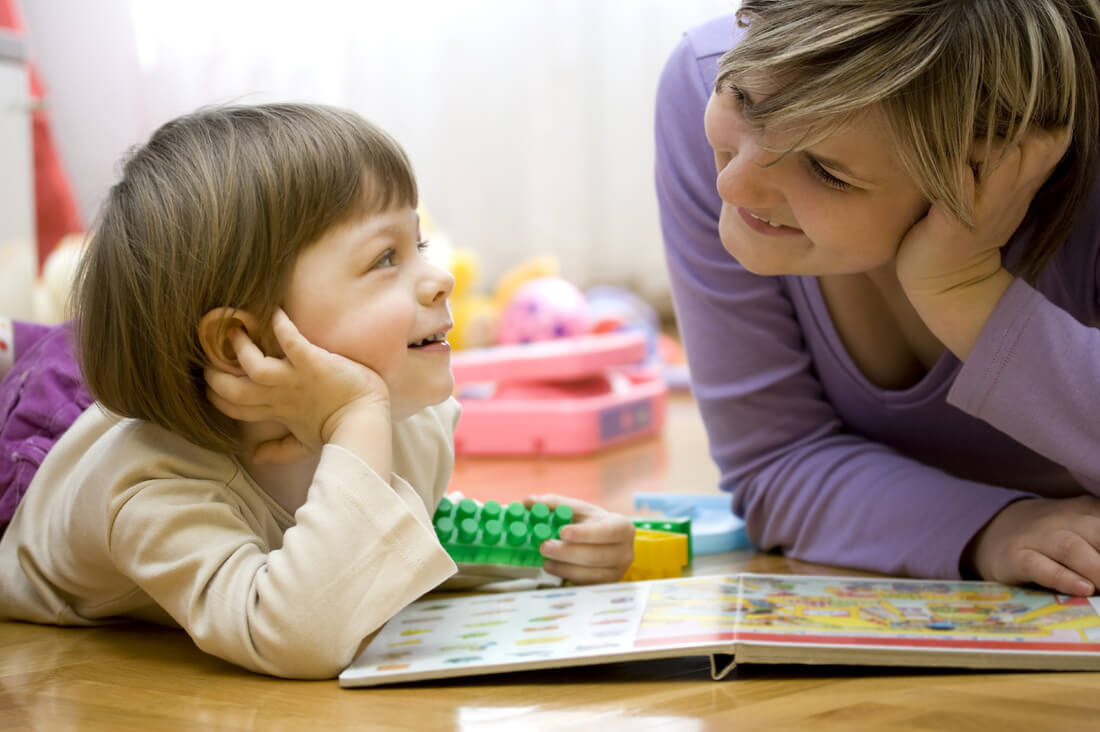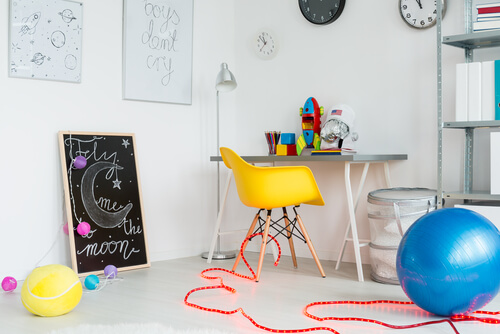9 Ideas to Decorate Your Child's Playroom

Decorating a child’s playroom is one of the most fun activities for both parents and kids. From the moment your baby is born, this space can help his or her psychomotor development.
It’s true that the design of this space will depend on how old your child is. However, if you design it well in the beginning, you’ll only need to make small changes as your child grows.
Ideas to Decorate Your Child’s Playroom
1. Choose a Good Space
An empty room or a room you don’t use would be the right place. Otherwise, you can dedicate some corner of the bedroom for a play area.
It’s very important to include things that help develop your child’s motor skills and creativity. You can also place his toys in functional ways to teach him that everything has its place. This helps him learn about order and organization.
2. Baby-Proof the Floor
To prevent your child from hurting herself, you should put pillows or cushions around the corners. Rubber mats on the floors are also a good option. They’re durable, waterproof, and easy to clean.
3. Add a Backboard
A good alternative, in addition to games, is to add a blackboard. With a chalkboard, your child can express herself, learn, and do many different activities. You can even get her different colored markers or chalk.
Adhesive vinyl is also a good idea. In addition to adding a nice touch to a bedroom, it can actually help prevent children from coloring on the walls.
4. Space for Playful Games
Keep your child’s age in mind when you choose games and toys. You should always study the best places for toys to make sure there’s enough space. These games could be board games, blocks and building toys, and video games.

5. Don’t Forget a Work Desk
In a child’s playroom, there should always be a table designed to do work, homework and activities. It should be at the right height for your child. You should also get one that can be used both for fun and for studying.
It’s also important to have a little shelf on the desk with everything your child may need when working. This can include crayons, watercolors, sheets of paper; anything he could use to let his imagination soar.
6. Make Sure It’s Well-Lit
Natural lighting is always ideal, but if that’s not possible, you’ll need to install a small lamp near the desk. This should help boost your child’s creativity.
If the room has windows, you can use curtains to let light in. Curtains also prevent the sun from damaging your child’s eyes. Add decorations for a nice personal touch.
7. Use Organizers
In addition to making the room look good, organizers will help you put away the toys once your child finishes playing with them. They’re ideal for organizing toys according to function. They will also help your child find toys because they’re always in the same place.
An excellent option is to use different colors for each category. For example, blocks go in the green box, race tracks in the red, and dinosaurs in the brown. Tea sets in the violet drawer, costumes in the pink, dolls in the orange, and so on.
By cleaning up their toys when they’re done using them, children will create good organizational habits at a young age. This habit will stick with them for the rest of their life. It also stimulates their sense of direction.
8. Make Good Use of Colors
The best colors to paint the walls are soft, neutral colors. After you paint the walls, your child can pick a theme. You can trust her instinct and let her pick the theme she wants.
“In a child’s playroom, there should always be a table designed to do work, homework and activities.”
If it’s a shared room, you can decorate it with a zoo theme or something similar. Everything depends on what the little ones like best.
A good idea to decorate children’s playrooms is to take advantage of the influence colors have on their mood. Colors stimulate and boost social, emotional and cognitive development.
Colors also influence children’s temperament and personality. In this way, red toys give them energy and make kids want to move. This is recommended for quieter children that need a little energy boost.
In turn, yellow toys are usually good for children with concentration difficulties. They help to enhance cognitive development and boost thinking capacity.
Blue toys tend to help little ones relax. They also help promote sleep. For this reason, they are recommended for active children or kids that are very irritable or cranky.

9. Include a Space for Books
It’s important to have some bookshelves in the playroom that kids can easily access. Even when they’re too young to read, the pictures will motivate them to want to open the books up.
A great idea is to place an armchair where parents can sit and read with their children to encourage reading. At the end of the day, this room is great for family time and fun.
Decorating a child’s playroom is one of the most fun activities for both parents and kids. From the moment your baby is born, this space can help his or her psychomotor development.
It’s true that the design of this space will depend on how old your child is. However, if you design it well in the beginning, you’ll only need to make small changes as your child grows.
Ideas to Decorate Your Child’s Playroom
1. Choose a Good Space
An empty room or a room you don’t use would be the right place. Otherwise, you can dedicate some corner of the bedroom for a play area.
It’s very important to include things that help develop your child’s motor skills and creativity. You can also place his toys in functional ways to teach him that everything has its place. This helps him learn about order and organization.
2. Baby-Proof the Floor
To prevent your child from hurting herself, you should put pillows or cushions around the corners. Rubber mats on the floors are also a good option. They’re durable, waterproof, and easy to clean.
3. Add a Backboard
A good alternative, in addition to games, is to add a blackboard. With a chalkboard, your child can express herself, learn, and do many different activities. You can even get her different colored markers or chalk.
Adhesive vinyl is also a good idea. In addition to adding a nice touch to a bedroom, it can actually help prevent children from coloring on the walls.
4. Space for Playful Games
Keep your child’s age in mind when you choose games and toys. You should always study the best places for toys to make sure there’s enough space. These games could be board games, blocks and building toys, and video games.

5. Don’t Forget a Work Desk
In a child’s playroom, there should always be a table designed to do work, homework and activities. It should be at the right height for your child. You should also get one that can be used both for fun and for studying.
It’s also important to have a little shelf on the desk with everything your child may need when working. This can include crayons, watercolors, sheets of paper; anything he could use to let his imagination soar.
6. Make Sure It’s Well-Lit
Natural lighting is always ideal, but if that’s not possible, you’ll need to install a small lamp near the desk. This should help boost your child’s creativity.
If the room has windows, you can use curtains to let light in. Curtains also prevent the sun from damaging your child’s eyes. Add decorations for a nice personal touch.
7. Use Organizers
In addition to making the room look good, organizers will help you put away the toys once your child finishes playing with them. They’re ideal for organizing toys according to function. They will also help your child find toys because they’re always in the same place.
An excellent option is to use different colors for each category. For example, blocks go in the green box, race tracks in the red, and dinosaurs in the brown. Tea sets in the violet drawer, costumes in the pink, dolls in the orange, and so on.
By cleaning up their toys when they’re done using them, children will create good organizational habits at a young age. This habit will stick with them for the rest of their life. It also stimulates their sense of direction.
8. Make Good Use of Colors
The best colors to paint the walls are soft, neutral colors. After you paint the walls, your child can pick a theme. You can trust her instinct and let her pick the theme she wants.
“In a child’s playroom, there should always be a table designed to do work, homework and activities.”
If it’s a shared room, you can decorate it with a zoo theme or something similar. Everything depends on what the little ones like best.
A good idea to decorate children’s playrooms is to take advantage of the influence colors have on their mood. Colors stimulate and boost social, emotional and cognitive development.
Colors also influence children’s temperament and personality. In this way, red toys give them energy and make kids want to move. This is recommended for quieter children that need a little energy boost.
In turn, yellow toys are usually good for children with concentration difficulties. They help to enhance cognitive development and boost thinking capacity.
Blue toys tend to help little ones relax. They also help promote sleep. For this reason, they are recommended for active children or kids that are very irritable or cranky.

9. Include a Space for Books
It’s important to have some bookshelves in the playroom that kids can easily access. Even when they’re too young to read, the pictures will motivate them to want to open the books up.
A great idea is to place an armchair where parents can sit and read with their children to encourage reading. At the end of the day, this room is great for family time and fun.
This text is provided for informational purposes only and does not replace consultation with a professional. If in doubt, consult your specialist.








